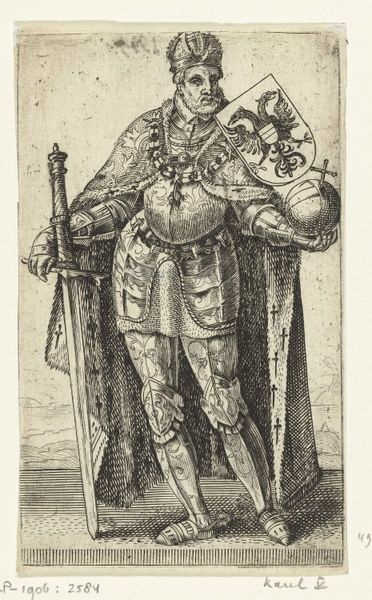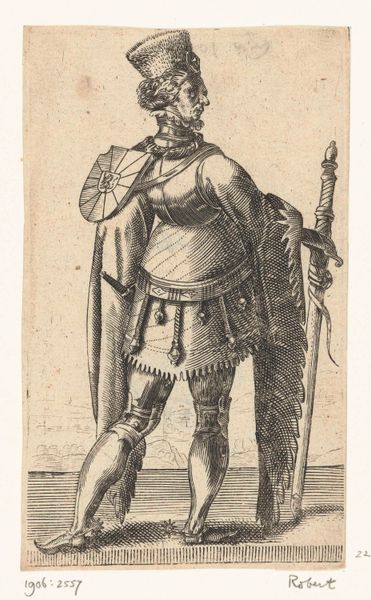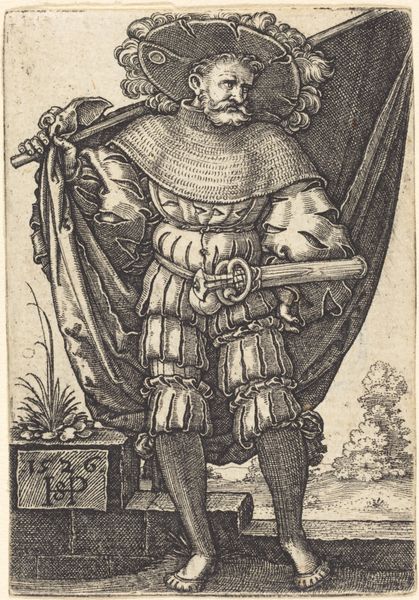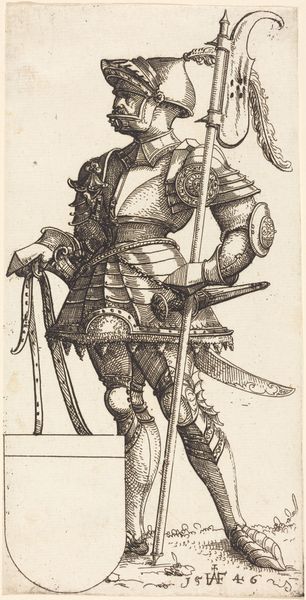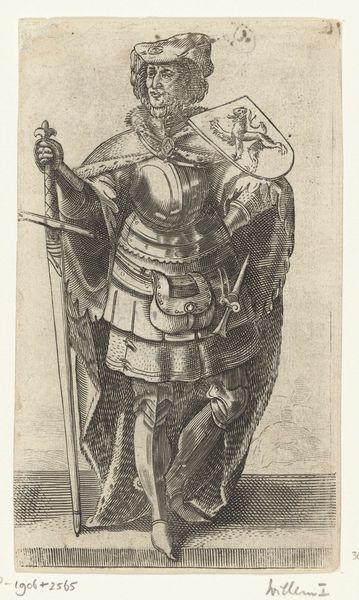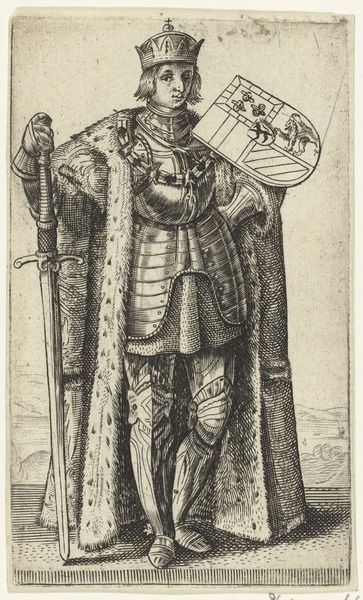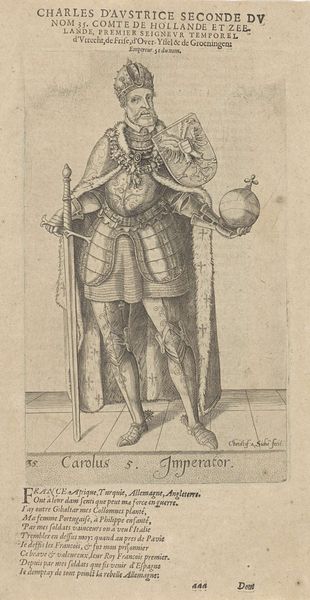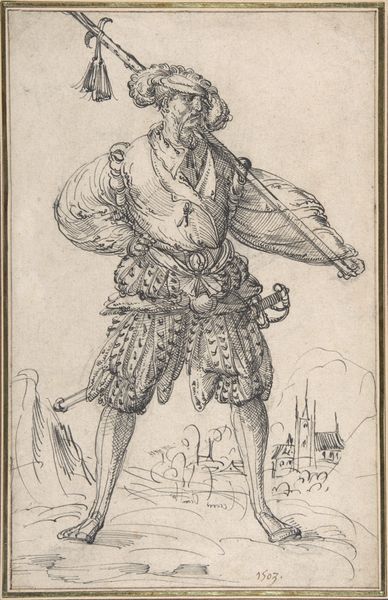
drawing, print, paper, engraving
#
portrait
#
drawing
# print
#
figuration
#
paper
#
11_renaissance
#
engraving
Dimensions: 54 × 36 mm (image/plate/sheet)
Copyright: Public Domain
Editor: Here we have Jacob Binck's "The Standard-Bearer," a drawing or print made sometime between 1520 and 1569. I'm struck by the figure's rigid pose and the incredibly detailed rendering of his clothing and armor. How do you approach analyzing this engraving? Curator: I would begin with an analysis of its formal structure. Notice how Binck employs line. The density of lines creates value and form, especially noticeable in the textural variations across the figure’s garb. What semiotic interpretations can be drawn from this linear complexity? Editor: Well, all that detail, the hatched lines defining form, convey weight and richness... prestige, even? Curator: Precisely. Let us consider the function of this abundance. The figure is adorned in highly embellished accoutrements; through the language of line, we interpret the construction of a privileged identity. What of the composition? Editor: He's placed squarely in the center, confident and imposing, taking up the whole frame. The background is really minimal, putting all the focus on him. Is it trying to say that the man is more important than his setting? Curator: Indeed. The relative austerity of the landscape concentrates visual attention on the figure. Note the interplay between positive and negative space contributes to the overall balance. How does the tension affect our interpretation? Editor: So, it's like he's elevated not just by his status, but by how Binck has structured the whole image. Everything draws our eye to him and tells us about his importance through shape, form, and line. Curator: You have astutely observed. By deciphering the internal logic of the composition, we arrive at a deeper appreciation of Binck’s artistic choices. The essence resides within the image. Editor: I will consider these insights moving forward, to analyze the intentional choices that form an artist’s style.
Comments
No comments
Be the first to comment and join the conversation on the ultimate creative platform.
